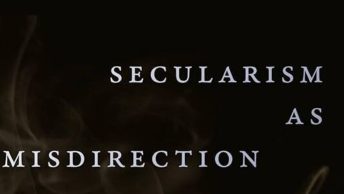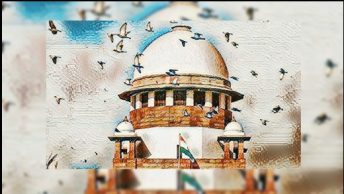(Ed Note: Shahrukh Alam’s review is the fifth post in our blog’s round-table book discussion on Prof. Jeff Redding’s A Secular Need: Islamic Law and State Governance in Contemporary India moderated by Prof. Rohit De. The introductory post and links for other responses can be found here. This is Part I of the two-part post; Part II can be found here).
“Aye aab-e-rood-e-Ganga, woh din hai yaad tujhko?
Utra tere kinare, jab karwaan hamara”*
“Tarana-e-Hind” – Allama Iqbal (1877-1938)
Jeffrey Redding’s book, ‘A secular Need’, makes an initially counterintuitive, and yet a most compelling case for legal pluralism. When I was first introduced to his work, it opened for me completely new ways of imagining the dar ul qaza, as well as the secular courts. Jeff’s work relies on rich ethnographies, and it showed me that an argument for plurality of traditions, and even non-state institutions, was not a repudiation but a reimagining of secular, feminist, or republican ideas. I feel that the strongest and most convincing part of the book remains its detailed ethnography of the qazi courts, and the historicizing of that tradition in the context of partition and ‘belonging in India as Muslims’. Shaunna Rodriguesfurther traces its genealogy to the ‘articulation of the counter-universal’ in the Khilafat movement. Dr. Farrah Ahmad refers to Jeff’s thesis as his disruption of the narrative of ‘rejection by Muslims of broader (host) political communities’. I am largely convinced: the following two notes are only an attempt to examine the idea from emergent political perspectives.
A final tangential thought: Jeff says that India was a more useful site for his work because in its lived experience, it challenges ‘conventional and powerful narratives about the inevitable opposition between Islamic law and secular forms of governance, and the impossibility of their coexistence’, which hold sway in North America, Western Europe and the middle east. There, ‘heated hostilities’ do not allow for such a nuanced discourse. Now, with further hardening of positions, especially in the French context, I hope this important work finds a way to contribute to the particularities of those regions too.
* Note 1: I am fully conscious of the fact that Iqbal’s couplet frames Indian Muslim identity in a manner that mirrors the self-perceptions of the ‘ashraf’ classes of north India. Ayesha Jalal describes it as a ‘questionable reading of the history of Islam in the subcontinent’ and ‘spurious representations of Indian Muslims in undifferentiated terms as descendants of foreign immigrants’, but yet I’ve used it for the nostalgia that it evokes.
Jeff uses the same frame, too, especially in his poetic references to Muslims seeking to find a home in India, as opposed to it being a mere waystation (Page 55). He argues that the historical origins of the dar-ul-qaza network resolved to some extent the religo-cultural predicaments of Muslims at partition: it assured them of the possibility of an India that Muslims desired rather than simply a place where poverty detained them (Page 32). The juxtaposition of ‘reassurances about faith’ with poverty as reasons of belonging is curious, and quite ‘ashraf-like’ in thought, for it assumes that the sense of belonging came only with a distinct Muslim cultural identity. It is true enough if one looks at nineteenth century north Indian literature, but then: sitaron se aage, jahaan aur bhi hain…[1]
Papiya Ghosh’s work (‘Community and Nation: Essays on Identity and Politics in Eastern India, New Delhi, OUP: 2008) questions the idea of a homogenous and exclusive ‘Muslim identity’ based on ‘Muslim/Islamic consciousness’. While there were several groups that reiterated Muslim belongingness to India (like the dar-ul-qaza networks, the Imarat-e-Shari’a and the Jamiat-al-Ulama-e Hind, which did so on the promise of a multi-cultural society), there were others like the razil (working men) biradris, or the Momin Conference, which were organized primarily on the basis of occupational castes, wages and in opposition to ‘high born’ Nawabs and Zamindars. Ghosh’s work explores ‘high’ and ‘low’ Muslim politics (‘ashraf’ and ‘arzal’, if you will), which had entirely different hopes and aspirations, and their own struggles ahead of them. The Momin Conference attempted to form ‘transformative razil collectives’ of peshewar (working) men based on their occupation/castes (‘rayeens’, ‘mansooris’, ‘idrisis’, quraishis, etc.)
The system of dar-ul-qaza promised familiar cultural tropes, within a post-colonial, pluralist Indian state, and to a large section of Muslims that was undoubtedly reason to feel at home. However, I would offer that it was not the only means to avoid ‘social closure’ in those changing times. In fact, as group interests evolved in the early part of nineteenth century, so did political demands, even around religion and culture. The Begum of Bhopal, speaking at the second annual meeting of the All-India Women’s conference in 1928, appealed for women to come together, across religious divisions, on the question of women’s rights generally and women’s education more particularly. The AIWC registered its support to the Sarda Bill (on restraint on child marriage) from which some Muslim leaders wanted an exemption, and sent the following representation to the Viceroy: “We, speaking also on behalf of the Muslim women of India, assert that it is only a small section of Mussalman men who have been approaching your Excellency and demanding exemption from the Act. This Act affects girls and women far more than it affects men, and we deny their right to speak on our behalf.”
Later, in the early 1930s, significant numbers of Muslim women joined the Ulemas to ask for reforms in Muslim Personal Laws, in opposition to customary laws, and to British practices relating to land. Sabiha Hussain describes the reform movement as one that imbricated both the anti-colonial movement, as also the movement for women’s rights. The Taluqdars of UP, the ‘muslim- leegees’, who liked to follow their own customs, especially in matters of inheritance, were against such new-fangled shari’ai ideas. Notions of belonging attach themselves to different affective registers.
To be sure, the diversity within Muslims of India is only tangential to Jeff’s thesis, which is that the non-state Islamic dar-ul-qaza complements the secular state – that it is both a theoretical (in the style of the Lacanian objet petit à)[2] and a material need of the secular state. But on the subject of the former kind of ‘secular need’, the undifferentiated position perhaps misses out on an important critique of the ‘secular-savarna Indian state’ from within the Muslim Pasmanda discourse. This discourse critiques the ‘high culture’ pluralist ideals of the Indian state, which come at the cost of Bahujan lives and agency. It agrees that the secular state allows for certain ‘Muslim’ forms of expression, but it argues that these forms are appropriated by those in power, and by those who are naturally allied to the state and to the exclusion of the large majority of Muslims. These ‘spaces/ practices of belonging’ also tend to be hegemonic vis-à-vis those lower down in the caste/class hierarchy. [See Khalid Anis Ansari’s work]. In this regard, I am intrigued by Rodrigues’ comments about the imagination of the network of dar ul qaza as something ‘more’: a site for reflection on the diverse kinds of Islam/ Muslims. I agree, too, that this is the self-description that AIMPLB has repeatedly (but unconvincingly) tried to arrogate for itself.
Jeff’s research detailing decades of ‘violent violence’ and ‘quotidian violence’, and also the economic and social neglect of Muslims generally, might complicate the Pasmanda claim of the ashraf being complicit in the tyranny of the secular-savarna state, but it would be even more interesting if, at some later stage, it were to properly imbricate it. Is the dar-ul-qaza a manifestation of ashraf appropriation of power? How does it involve the Pasmanda groups?
An engagement with the Pasmanda discourse might reveal much more: the Shari’a Act of 1937 was an exercise in assimilation. While ‘reforming’ customary laws, it also affected caste and tribal Panchayats. It would be interesting to know, particularly in the wake of the Pasmanda movement and the caste assertions, whether matters relating to the family are brought before the Panchayats? What is the caste/ class composition of those who prefer the dar ul qaza?
[Another side note: Jeff has written extensively on the formal legal system and how it is neither ‘formal’ in terms of certainty of procedure/ end result, nor entirely hidebound in terms of written law (Page 83-87). Moreover, in terms of personal law (and increasingly in other areas of law) it is not even ‘secular’. In fact, there is great flexibility in the way that it operates. On the other hand, the informal systems of dispute resolution seek to mimic the formal procedures, which may not be directly derivative of the Shari’a. In that sense, I’m taking the ‘secular’ – ‘Islamic’ dichotomy to be a short form for the larger argument being made.Arif Jamal, of course, makes this point also in the context of the dichotomy that Jeff creates between the ‘Islamist’ and the ‘secular’ systems. Again, I’m taking it to refer to the state’s distorted perception and articulation of the other].
Under the Pasmanda frame, the book strikes at least two discordant notes: one, in its reference to ‘Hindu-Muslim conflict as being the most salient kind’ [as opposed to the caste conflicts, or those wrought on Adivasis by the developing state], and the other is the comment in favour of reservations for all Muslims [as opposed to those for lower caste groups amongst Muslims] (Page 12, 13).
[1] Muhammad Iqbal, Bal-e-Jibreel
[2] Lacan: “The objet a is something from which the subject, in order to constitute itself, has separated itself off as organ. . . It must, therefore, be an object that is, firstly, separable and, secondly, that has some relation to the lack” (Seminar XI: The Four Fundamental Concepts of Psychoanalysis, p. 101).






Thanks for sharing. I read many of your blog posts, cool, your blog is very good.